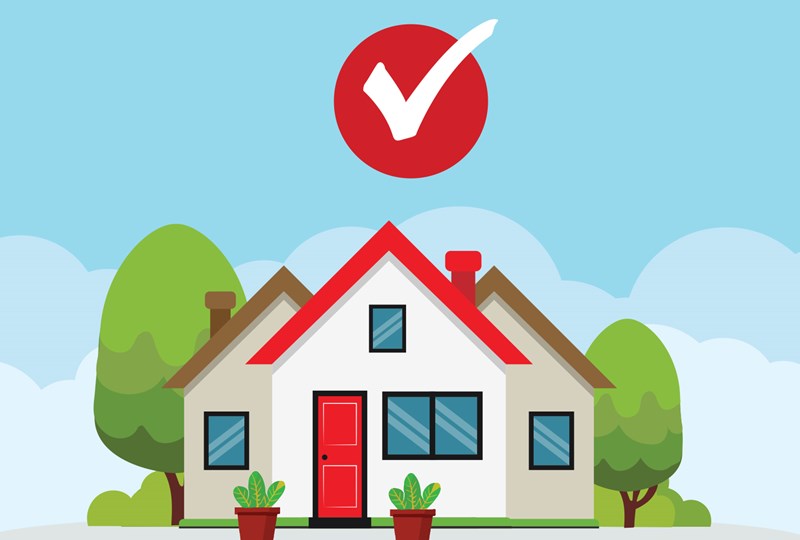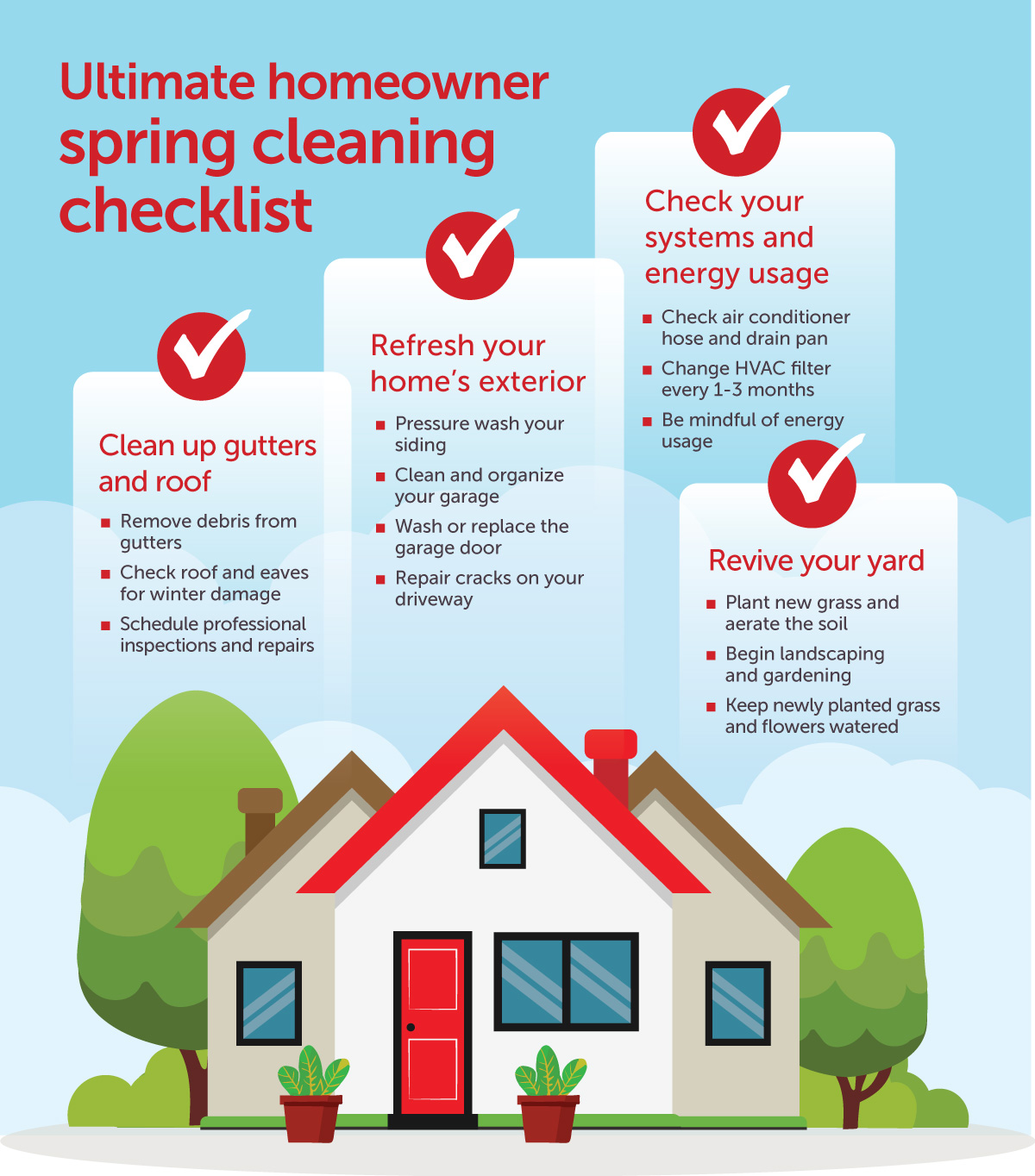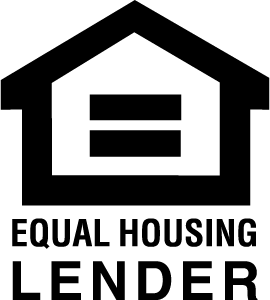
Key insights
- When debating between a condo and a house, it’s important to consider the pros and cons of both.
- Consider how important it is to have control over upkeep and renovations, especially as they relate to timing and money.
- Think about your current lifestyle and how a home or condo can meet your needs.
- Determine how much you have to spend and if your living situation may change in a few years. Be sure to take all costs into consideration!
You’re thinking of buying, but is it time for a condo or a house? Owning a condo can mean a little less autonomy than owning a single-family home — but for some, less control (and less upkeep) can be a good thing.
Here are the pros and cons associated with property control, lifestyle preferences and your personal timelines as you search for a condo or house. Use these insights to help you determine what style of property will be best for you and your family.
Control of the property
House Pro: When you own a house and the land it sits on, you get to make decisions on upkeep and renovations. You can budget what’s best for you and maintain control over what is fixed, how it’s fixed and when it’s fixed. (One notable exception to this rule: If you live in a housing development of single-family homes with a homeowner’s association (HOA), you may have to abide by some general guidelines related to exterior updates and condition, lawn maintenance and holiday decor).
House Con: If something unexpected happens, no one is going to help you. It’s your sole responsibility, and in some cases, the repairs or renovations may be costly. In order to plan for this, you may have to create and manage a savings account that is meant to be used for emergency repairs (like your furnace going out in January) or long-term maintenance you can anticipate (like new siding).
Condo Pro: When you own a condo, the homeowners’ association, or HOA, manages the repairs and renovations for the complex’s exterior and shared areas. They’re tasked with budgeting the cost of necessary updates in advance, and they use your condo HOA fees to pay for them. This means that if the hallway carpet needs to be replaced or the elevator breaks, it isn’t your sole responsibility to fix it — the HOA will manage the repairs using the fees you and the other unit owners have already paid.
Note: In some cases, the HOA may have to charge a special assessment to pay for large repairs they didn’t plan for or emergencies that can’t be covered by their reserve fund. This means that you may have to pay more than your HOA fees on occasion.
Condo Con: Unless you’re an influential member of the HOA, you won’t get to choose which projects are deemed necessary by the HOA. This means that if there’s an expensive exterior issue that only affects your unit, you may have a harder time convincing the HOA to fix it. And even if a project you want is taken up, you most likely won’t have any say in design, color, material or other aesthetic choices.
Plus, at some point, your fees will likely be used to pay for updates that don’t directly affect you. You may watch from your first-floor unit as the HOA drains the reserve fund for a new roof, or they may decide to add a swanky new fitness room that you’ll never use. This can be frustrating, and the best way to deal with that frustration is to remind yourself that if nothing else, these repairs will help you upon resale of your unit.
Last, it’s important to remember that what happens within the air space of your individual condo unit is your responsibility. For example, if you own a washer and dryer set within your unit and the machines break, you will (typically) still be on the hook to repair or replace them. Some HOAs may cover certain appliances or services within your unit, but condo owners are still homeowners, which means you should anticipate paying for repair and upkeep costs within individually owned units.
Questions to ask yourself:
- Would you like to take on occasional home projects and call the shots about renovations, budgets and upgrades? Is the promise of control worth the time and money you’ll spend maintaining your property?
- Alternatively, would you rather spend minimal time on property updates and facilitating emergency repairs while also relinquishing some of the control over your property?
Lifestyle insights
House Pro: If you’re a renter who is ready to take the plunge into homeownership, you may be excited to have private space that is entirely under your control. Paint a mural, knock down some walls, add a chicken coop in your backyard. Provided you have the money and the motivation (okay, and the permits), the sky’s the limit.
House Con: You’ll quickly find that your new house comes without any built-in amenities and services — and that these bills can add up when you pay for them on your own. Whether it’s paying for a pool or gym membership, or setting up waste and water utilities, owning a home can have some seemingly hidden expenses that can add up if you don’t plan ahead.
Condo Pro: As a condo owner, you can take advantage of many shared amenities without putting any time into them. Enjoy a hot tub soak or pool day without fretting about chlorine testing and draining. Host a summer party on the rooftop garden deck, even though you’ve never tended to the plants or swept the patio. One caveat: The size of your condo development can impact just what the HOA pays for, and what you decide to divide up among condo unit owners. For example, a condo building with only four units may expect the homeowners to take an active role in cleaning shared spaces or completing yard maintenance in order to save money.
And, of course, remember that if your HOA (or the property management company they hire) pays for plowing or offers underground parking, it may be possible for you to make it through an entire Minnesota winter without breaking out your shovel. Can you put a price on that?
Condo Con: Is that upstairs neighbor running laps? Dropping bowling balls on the floor? Grinding forks in their disposal? Sharing space and walls means that you’ll sometimes be inconvenienced by the noise and curious habits of other condo owners, although HOAs often have rules prohibiting excessive noise.
You’ll also be under the watchful eye of your HOA. While your private unit is typically yours to customize, HOAs can have restrictions on everything from the welcome mats you place in the hallway to the grill you hope to keep on your patio. (So yeah, we can almost guarantee your condo-based chicken coop won’t be approved.)
Questions to ask yourself:
- Do you mind living in a communal setting where you can take advantage of shared amenities and services in exchange for making small talk in the elevators and sharing walls?
- Would you prefer to have a fully private space and manage everything from bills and utilities to gym memberships on your own?
Long-term financial considerations
House Pro: A single-family house has the capacity for major repairs or renovations — including the addition of new bedrooms or a wrap-around deck — that can greatly build its appeal and value over time.
House Con: Big renovations like that deck will cost you thousands of dollars, and you may not recoup the entire cost of the project upon resale.
Condo Pro: Whether you’re entering the real estate market for the first time or are a repeat buyer, you’ll likely find that condos are an affordable home option.
Condo Con: While the price of your condo could be less than a single-family home, the condo HOA fees you’ll pay will greatly increase your total spending as a homeowner. Be sure you understand the full cost of owning a condo before buying, which includes:
- Your mortgage principal and interest
- Property taxes
- Homeowner’s insurance
- Condo HOA fees
- Individual unit repairs and upkeep
- Parking fees, if applicable
House Pro: You have the option to rent out your single-family home if you aren't ready to sell — provided that it is permitted by the local government. (Some cities require that homeowners obtain a license before renting their home.)
House Con: Finding renters for larger homes can be difficult, as the price of the rent can be more than a mortgage of a smaller property. And by renting out the home, you likely won't make big property repairs that would increase the value of the home upon resale.
Condo Pro: If you aren’t in a good position to sell your condo, but want to move out, you may be able to rent it out until the property has built up equity. Whether you find a young professional tenant or lease the condo to your child or another family member or friend, renting a condo can be a great alternative to selling.
Condo Con: Some HOAs don’t allow rentals or they have a quota on the number of rentals allowed within the complex at a given time. If you think you may want to rent your condo unit out eventually, check upfront to see if the complex and HOA allow it. And remember that the rules can change during your ownership.
Questions to ask yourself:
- How much do you have to spend, and what are your long-term goals for owning? Are you hoping for a quick payout or a long-term investment?
- If your lifestyle changes or you need a bigger place to go, do you hope to rent the property out?
Key points and next steps
When making the decision to buy a condo or a house, consider the pros and cons of:
- How much property control you want to have, and whether you’re comfortable outsourcing decisions and repairs to an HOA.
- The lifestyle you are hoping for as a homeowner, which includes the special projects you wish to take on and the interactions you’ll have with neighbors in a shared space.
- Your own personal timeline, including how long you plan to stay in the property and if you’ll need the option to rent it out in the future.
If you’re ready to speak with a REALTORⓇ about touring condos or single-family homes in your desired area, reach out. Together, we’ll explore the advantages of each.













 ©2025 Prosperity Home Mortgage LLC®. (877) 275-1762. 3060 Williams Drive, Suite 600, Fairfax, VA 22031. All first mortgage products are provided by Prosperity Home Mortgage, LLC®. Not all mortgage products may be available in all areas. Not all borrowers will qualify. NMLS ID #75164 (For licensing information go to: NMLS Consumer Access at
©2025 Prosperity Home Mortgage LLC®. (877) 275-1762. 3060 Williams Drive, Suite 600, Fairfax, VA 22031. All first mortgage products are provided by Prosperity Home Mortgage, LLC®. Not all mortgage products may be available in all areas. Not all borrowers will qualify. NMLS ID #75164 (For licensing information go to: NMLS Consumer Access at